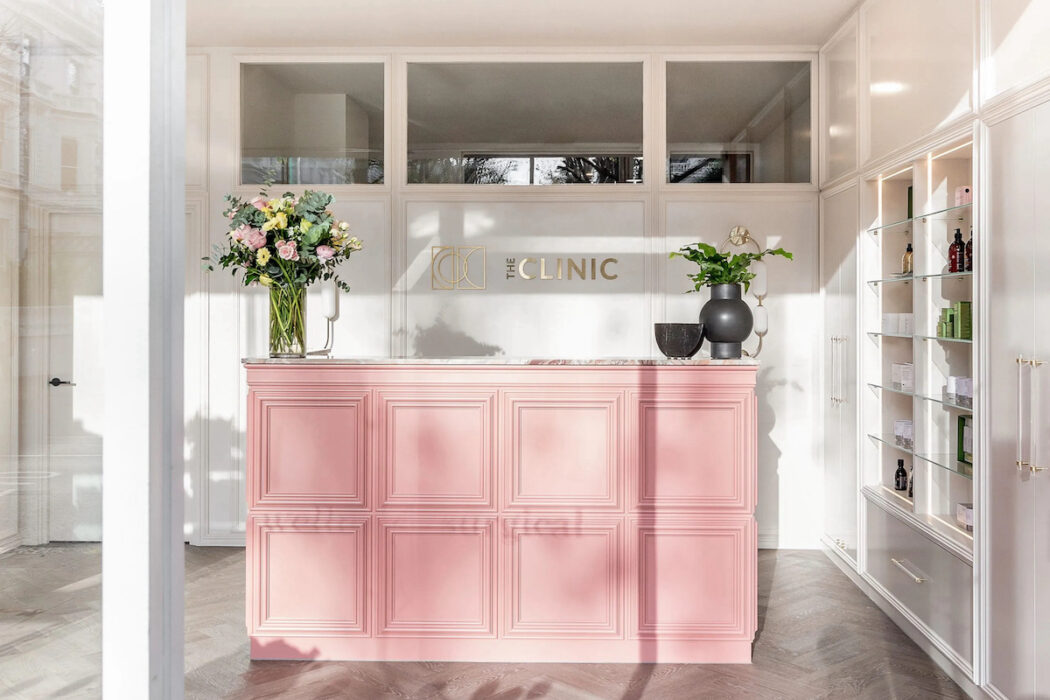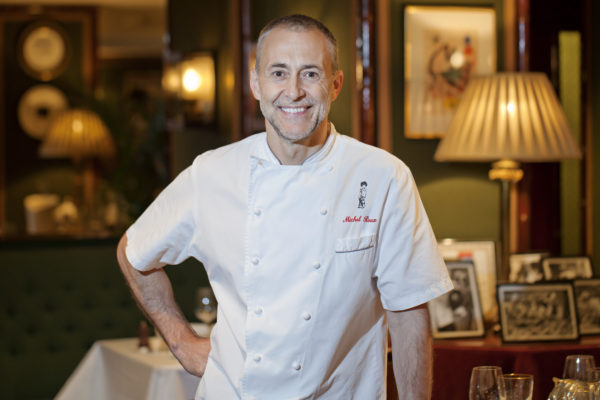In this inaugural edition of The Elective, we sit down with Aesthetician, Ophthalmologist and Oculoplastic Surgeon Dr Jennifer Doyle and Consultant Ophthalmologist and Oculoplastic Surgeon Mr Richard Scawn for a deep dive on The Clinic Holland Park.
A stone’s throw from the private courts of Norland Square Garden you’ll find The Clinic on Holland Park Avenue, offering surgical procedures, non-invasive treatments and holistic therapies ranging from ophthalmology and oculoplastic surgery to medical-grade aesthetic treatments, private GPs and dermatology. We sat down with Dr Doyle to understand how The Clinic’s multi-disciplinary team is pushing to create a super-clinic with a difference.
Can you tell us about some of your signature treatments?
On the surgical side, our signature treatment would have to be blepharoplasty with Mr Richard Scawn, who is one of the top oculoplastic surgeons in London. Blepharoplasty is an eyelid lift – either the upper or lower eyelids, or both, depending on the client’s goals – and it is one of the safest and most effective surgeries to open up the eyes and rejuvenate your look. We have seen a marked increase in demand for this procedure, ever since the Covid lockdown got us all acquainted with our on-screen appearances in video conferencing and the like.
READ THE FEATURE IN THE CILLIAN MURPHY EDITION HERE
On the aesthetics side, our signature treatment is our most popular treatment: the BBL, (Broadband Light phototherapy) and Moxi combination, usually for the face, neck, decolletage, forearms and hands. We were the first clinic in London with the device to offer Moxi and BBL, and we have the most experience in the region. Skin is ‘in’ as a trend at the moment – especially skin quality. The beauty of Moxi/BBL combination procedures is that it treats such a wide range of concerns, be they pigmentation, broken capillaries and vascular issues or rosacea, as well as fine lines, texture and wrinkles.
Dr Doyle. Your background is both as an aesthetician and surgeon. How do these professions complement each other? Where do you draw the line for patients who are looking for a change and are not quite sure what procedures they want? Similarly, where do you draw the line for patients looking to imitate a social media ‘filter’ look?
As an ophthalmic and oculoplastic surgeon, I frequently see people wishing to make a change to their appearance. However, not everyone is a candidate for surgery and equally, not everyone needs surgery to achieve the result that they desire. So one of the reasons I started to offer non-surgical aesthetics was to be able to offer the full spectrum of treatments. Here at The Clinic, the surgical side is heavily led by Mr Scawn, who is an extremely experienced oculoplastic surgeon, who trained me as well as the other two oculoplastic surgeons on the team (Amelia Davidson and Aoife Naughton).
For those who are looking for a change and aren’t quite sure of what they want, we first of all do a Visia skin analysis (a high-tech diagnostic machine for the skin), which is a brilliant tool for reproducible and objective imaging. This allows us to discuss the image results with the patient and decide on a treatment plan together.
In terms of where we draw the line in managing clients’ expectations: what we do here is achieve natural results, and don’t tend to go for the social media ‘filter’ look (the TOWIE look, in other words). At The Clinic we have a psychologist with whom we work closely, being mindful of the modern-day pressures of that social media look. We have to be very careful and conscious that patients might be under undue pressure to achieve unnatural looks that would not be in their best interests. Our psychologist helps us deal with those patients.
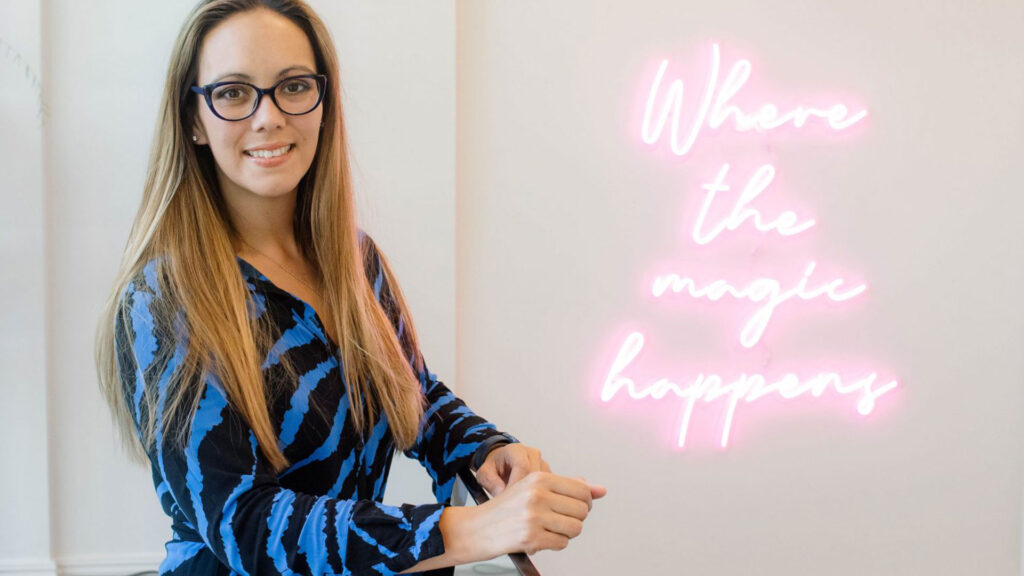
Following from this, can you discuss how social media has changed the expectations of beauty, aesthetic and surgical treatments? Are there changing trends in terms of treatments sought, alongside increased expectations for instant gratification?
Social media is obviously flooded by celebrities having these treatments, with ‘befores’ and ‘afters’ that aren’t always realistic. You will get patients coming in and asking for a particular procedure that they’ve read about a celebrity undergoing. I think managing expectations and ensuring that we’re always under-promising and over-delivering is key in making sure that our patients are happy with their outcome.
As for changing trends, I think more and more people are turning their attention to skin. They’re realising that we can’t just rely on the Botox/anti-wrinkle injections and fillers to achieve the desired result, because if the skin overlying that tissue is not good then they’re not going to get the best aesthetic results. So I think more and more people are now interested in skin treatments that rejuvenate.
Increased expectations of instant gratification? Yes, I think there are. We just have to be cautious as professionals to make sure the patient is aware of any downtime that is associated with any procedure and that their expectations are realistic. Only filler provides an instant change, and patients need to be aware that when they have filler, the amplified effect of the filler in the first 24 hours will decrease by 25%.
The combination of beauty, aesthetic and surgical in one clinic is unusual. How does The Clinic bridge the gap between these disciplines? Do you feel they are separate, or interlinked, or potentially a course of progression? Do you feel this is where the industry as a whole is headed in terms of multi-discipline destinations?
What we’re trying to do here is to provide something for everyone in terms of accessibility. From just getting your eyelashes treated right down to cataract surgery, there’s something for everyone. The key here is that we’ve got a team of professionals who work closely together and cross refer. We’ve hand-selected the best people in their field, so that if a patient comes in with multiple concerns or needs multiple procedures in order to get the best outcome – whether it be surgical, non-surgical or beauty procedures – we know that we can care for them in-house and work closely in the team to achieve the best results.
So yes, I think they are all interlinked (beauty, aesthetics and surgery) and also, potentially, a course of progression. You might come naïvely to non-surgical or surgical treatments and start with a facial, for example – we do medical-grade facials here with Emma Brown – and that might lead to a discussion on skin health that would lead you to try laser rejuvenation (for example). Equally, if it was noted that you had excess skin on your eyelids, you may therefore want to have a discussion with one of the oculoplastic surgeons about surgery. So there is potential for progression and the patients seem to like having everything under one roof.
We stand out from the crowd. We happen to be a superclinic – a new wave of high-end clinics that offer multi-discipline services – but I do not think the whole industry is headed this way. Our USPs are 1) that all our aesthetics practitioners are qualified surgeons, so all our procedures are consultant-led and consultant-delivered, and 2) that we can cover both aesthetic and surgical procedures in one destination: we have two state-of-the-art operating theatres on-site where we can carry out any procedure that requires local anaesthetic. This is not the case in any other UK clinic.
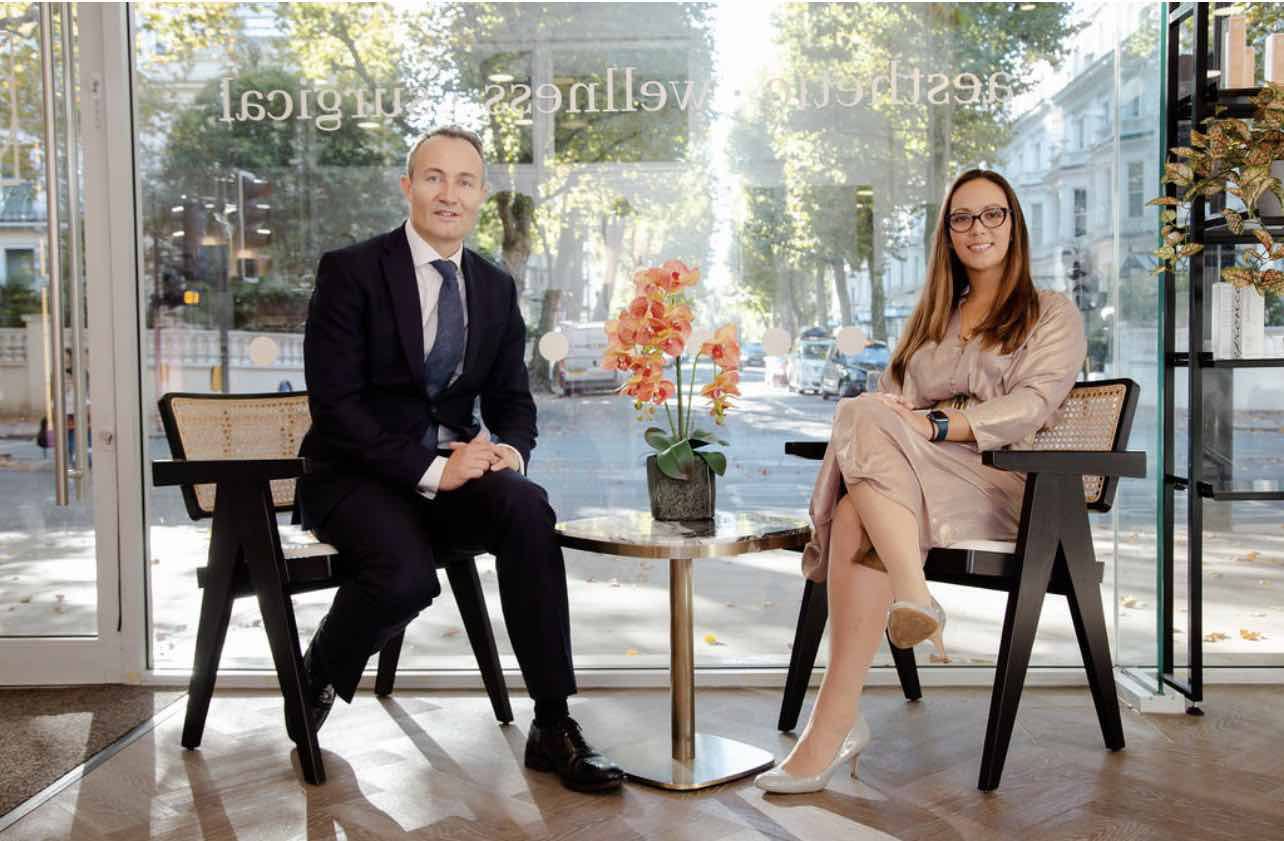
As an ophthalmologist, what are some day-to-day care procedures we can practise for healthier vision (dietary, lifestyle, etc.)?
Lifestyle wise: protect your eyes from UV radiation, especially as we’re coming into spring and summer. Make sure you’ve got appropriate sunglasses with built-in UV protection. Visit your optometrist on a regular basis because they can pick up the early signs of ocular disease.
In terms of diet, there are lots of things we can do. If you have age-related macular degeneration, for example, there are specially formulated eye vitamin supplements you can take. Equally, from the oculoplastics side of things, we see a lot of people who have rosacea and blepharitis affecting the eyes and causing dry eyes – a diet that includes fish oils and flax seed oils may help. Also, Richard Scawn manages a lot of eye and eyelid trauma due to sport, DIY and fires, and he recommends eye protection for DIY work, when playing sports such as squash, and taking care around fires – especially in the BBQ season.
Can you discuss if the needs of eye examination have changed, as our lives revolve more around screens? How often should we book our eye examinations?
Generally, you should have an eye examination at least once every two years. As you say, we are facing more and more screentime, particularly following Covid – we’re on Zoom a lot more and in virtual meetings, and this can lead to an aggravation of dry eye. Dry eye is a very common condition, it’s something we’re seeing more and more, and it’s something that we can readily assist with here by recommending eyedrops and other supplements
Sun damage is recognised as one of the leading causes of ageing. Are there any sunscreens that you would recommend? What brands are carried by The Clinic?
It is important to have a high factor, broad spectrum sunscreen. Here at The Clinic Holland Park, we work with two medical-grade brands – Alumier MD and Obagi – and we often use these post-procedure. We use the Alumier creams because they provide a physical block only and don’t have any chemical UV block in them, so they are safe post-procedure and also really good for the environment. For example, you can’t go scuba-diving on the Great Barrier Reef if you’re wearing a chemical block, but you can with a physical block.
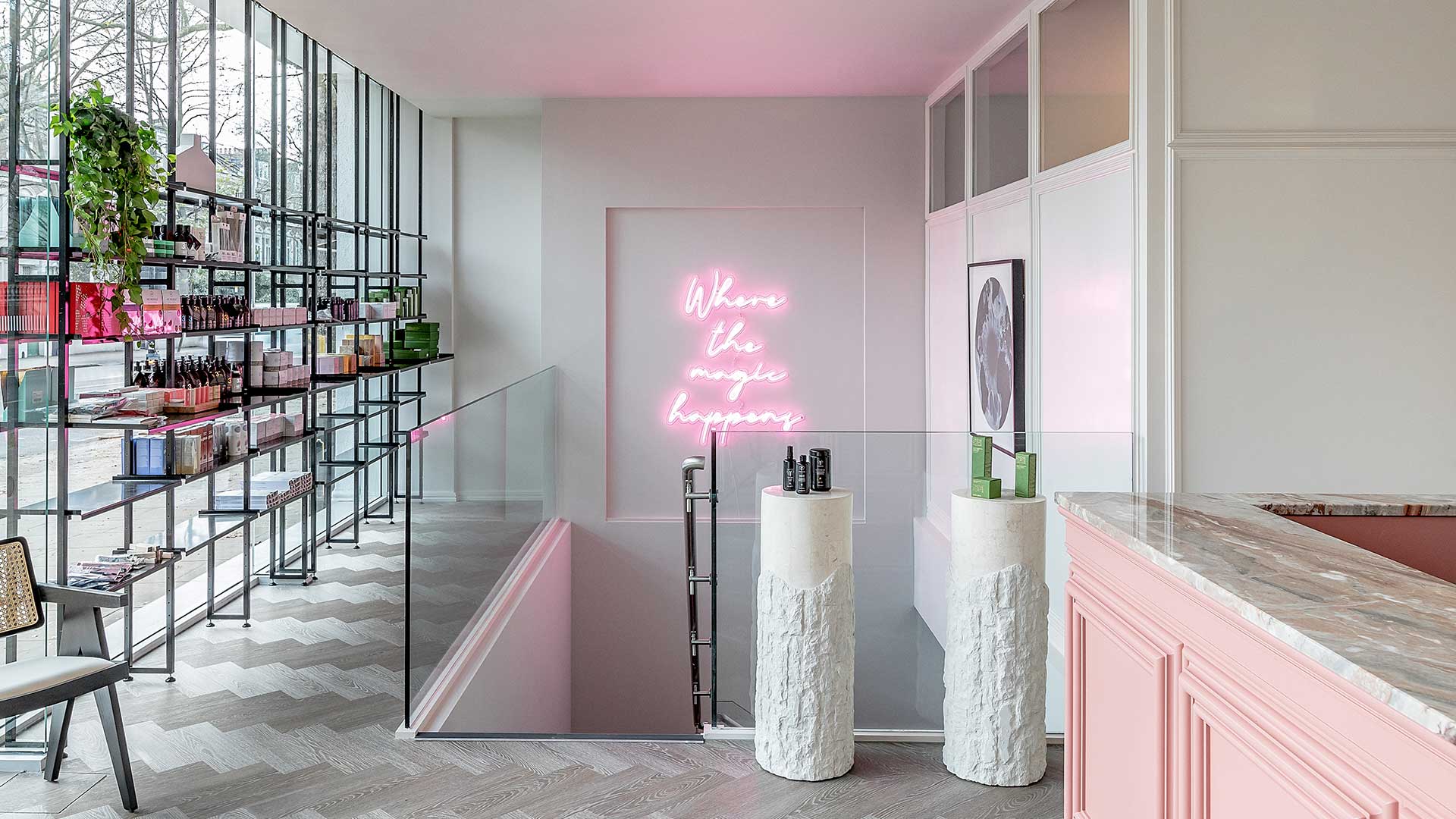
You are already established in numerous practices across the UK. Why was The Clinic at Holland Park created as another outpost? What might make this a destination over all others?
We are bringing in a team of expert consultants all under one roof, working together and not in competition. Moreover, The Clinic Holland Park – with its luxe ambience, discreet consultation rooms, purpose-built surgical theatres and discreet recovery pods – delivers a streamlined, first-class service that is not available elsewhere.
Can you tell us about The Clinic Club Membership.
For treatments that require maintenance or repeats (Botox and laser treatments), there is a membership option where you can sign up and save.
Can you tell us about some of the oculofacial treatments you offer at the Clinic at Holland Park?
We have a wide spectrum of procedures from having your eyelashes done to having Ameela – which is a new and exciting bio-revitalising treatment for the under eye and upper-eye area that treats dark circles and puffiness – to surgery, whether that be an upper or lower blepharoplasty.
Of the treatments performed, what is the ratio between direct treatment of medical issues, versus adjustments more centred around aesthetics?
I’d say about 50:50.
Can you tell us what patients should expect post-procedure (in terms of recovery time, location and post-surgery follow-ups)?
This very much depends on the procedure they’ve had and the individual patient. Your consultant will discuss any pre-procedural measures, downtime and aftercare at your initial consultation, so that you are fully aware of what to expect.
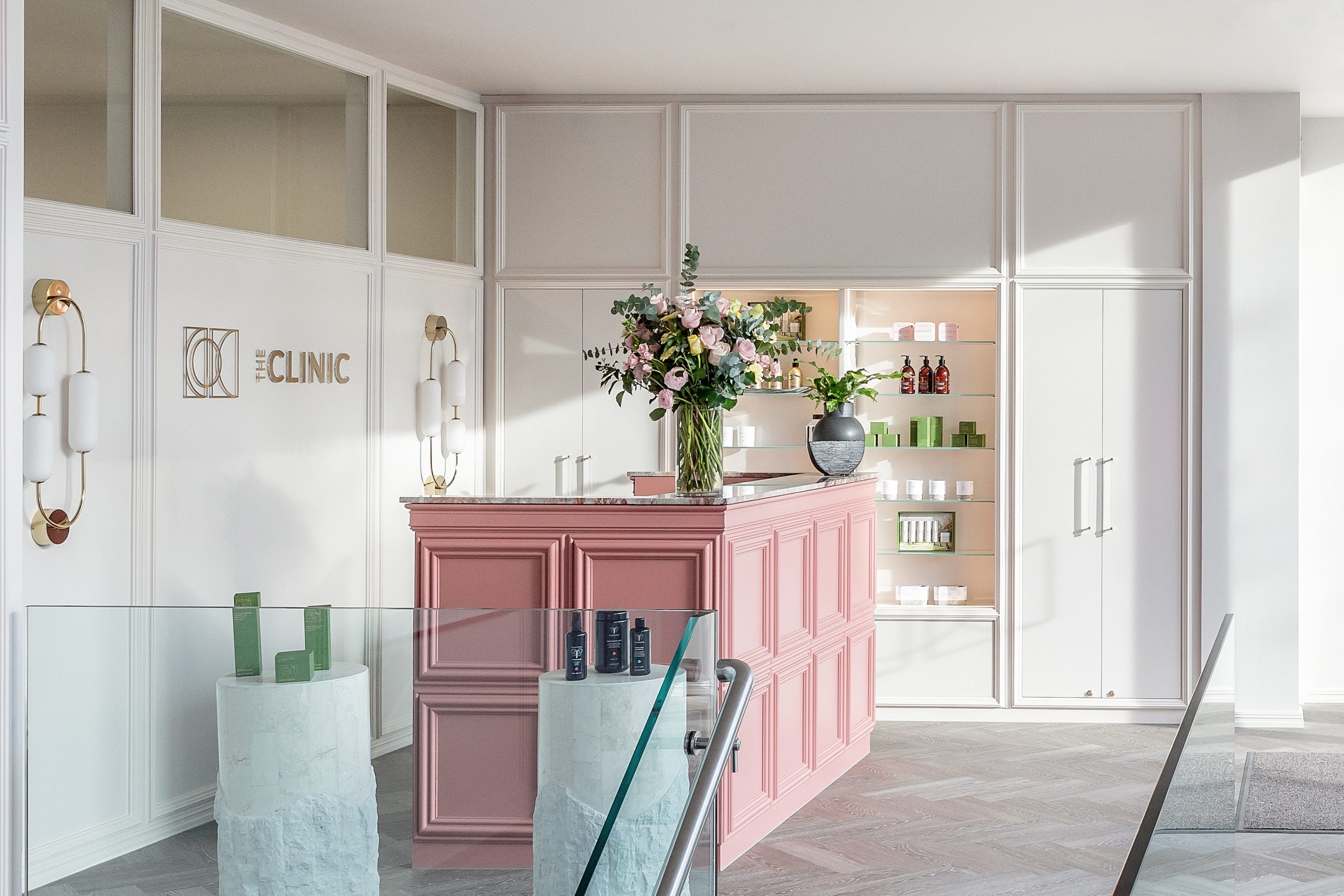
How might each clinician care for the mental health of each client, with regard to expectations and changes post-treatment?
Our consultants also work in the NHS, so we all come from a very evidence-based background in terms of ethics and how we work. This is a very important ethic at The Clinic: we do not offer any unnecessary treatments and if we are concerned about any patient’s mental health – especially body dysmorphia – we have an established pathway of referral through to a psychologist.
What are your views on the changes to legalities surrounding aesthetics? With the introduction of age limits and licensing, and regulation of advertising, do you feel this goes far enough to protect the consumer?
There is a long way to go in terms of increasing legalities surrounding aesthetics. As we know, a lot of these treatments are still being delivered by non-medics; at The Clinic we often get patients who have experienced complications elsewhere who come here to seek a second opinion. Going forward, there is more talk about regulation in terms of where these treatments are done and who can do them, and this is an ongoing discussion at government level at the moment.
Obviously, we would like to see the aesthetics industry fully within the medical profession and not with non-medical professionals carrying out these treatments. At the moment, it’s not illegal for anyone to buy the filler and inject it into anybody. I would like to see supply only to medical professionals who are fully trained, not only in the procedure but also when it comes to complications post-procedure.
The BBL
The first question people ask me when discussing elective surgery in conversation is “why?” Sure, I have the skin of a 20-something – at the moment – but it’s down to a combination of vanity and shame. I’m a blushing blonde and whilst that’s cute during childhood, I have tried to tone down those red cheeks with makeup ever since my teenage years. I’d had enough of looking flustered and not composed. Not to mention, who doesn’t enjoy a makeup free day? There is no place for full war paint in the gym, when poolside or in sunny climates. At least, not for me.
When I first dropped into The Clinic Holland Park, I was taken by the vibrant and leafy surroundings that are a far cry from the more austere environs of Harley Street. There is still that feeling of exclusivity, of course. The bright interior with herringbone flooring and pink accents was less sterile, aesthetically, than I had expected, which was another welcome change.
The waiting areas are cosy art-filled nooks to ensure privacy, with incredibly attentive staff on hand to attend to any needs. There was little time for an oxidising tea, however – as you might expect, The Clinic is run with Swiss-timed precision.
On arrival, the reception team immediately recognised me and led me straight to the intake with Dr Jenny. A lot can be said for bedside manner when it comes to elective surgery and Dr Jenny could well be the most calming and reassuring doctor I have had the pleasure to be treated by. After all, you are entrusting someone with your appearance in a permanent way; something that warrants consideration when it comes to with whom you place that trust.
The first part of the process was a Visia skin examination, which analyses different areas of the face like wrinkles and ageing spots. As a new entrant to the 30 Club, to be in the top 2% of my age group wrinkle-wise was an instant ego boost.
Having filled my intake form online a few days prior, we discussed the treatment and any reservations or concerns I had. Apprehension is natural in these circumstances, but I need not have worried.
The treatment itself involves an initial patch test in the clinic’s surgery to ensure no adverse reactions to the gel or laser itself. I lay down with my eye protectors firmly in place and let Dr Jenny set to work. What did it feel like? Imagine a small elastic band snapping on your skin repeatedly. It certainly got my adrenaline pumping. As the treatment continued it began to get a little hotter, with Dr Jenny ensuring I was comfortable and applying an array of cooling tools. I have to say, she coached me through the process with positive affirmation of the highest order.
My second round of treatment a month later was a more relaxed experience, with my fight or flight instinct firmly stowed. I noticed the same light swelling in the face post-treatment but, to be honest, it was only noticeable to a partner or family and came down in two or three days. Prior to the treatment, you’ll need to stay out of the sun for at least two weeks to ensure you don’t have a tan. Post, you’ll also need to stay out of the sun for two weeks and please ensure you all wear sunscreen. We’ve said it enough, haven’t we? I was headed for Croatia, Montenegro and Australia… so perhaps consider arranging your treatment in the Autumn. Applying ice can help reduce any swelling that may occur.
The BBL is described as a lunchtime procedure, and time-wise that’s certainly true. Vanity-wise, I would probably still opt to hide inside. If the skin isn’t broken, you can apply make-up straight away but you’ll want to give your skin time to breathe. Instead, I went to dinner in town with a friend immediately after. I probably should instead have made my way to a bag of frozen peas and a horizontal life pause, but the swelling, sensitivity and redness reduced after two days. You might well need several sessions for optimal results, but after two sessions I can see that my face is noticeably less reddened and the vessels are less apparent, especially the larger ones.
As someone who’s dealt with rosacea from an early age I can certainly sing the praises of the BBL, and the lovely Dr Jenny.

